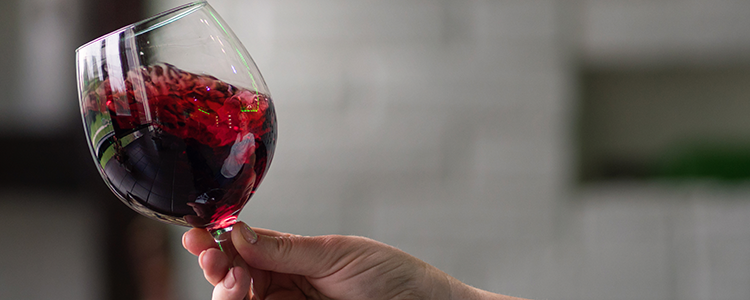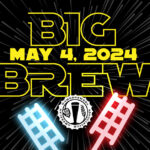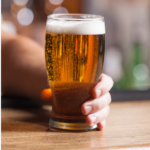
In this full day seminar, you will learn advanced home winemaking techniques, including advanced analytical techniques for measuring and adjusting key quality control parameters, and to integrate these learnings in reviewing detailed protocols for making outstanding white, rosé and red wines and in different styles.
This seminar is geared towards intermediate and advanced amateur and small-winery winemakers.
Great Fermentations, Indianapolis, IN
Saturday, September 17th, 2022
9:00 AM – 4:00 PM (Coffee and Lunch will be provided.)
$300/person (save $25 by registering before September 2nd, 2022)
To register, contact Bryan at Great Fermentations by phone or email: 317-257-9463 or customerservice@greatfermentations.com. Payment is due in full to reserve your seat. A minimum number of participants is required to run this seminar, and you will be notified by August 26th, 2022 and issued a full refund if the minimum is not reached.
Paid attendees can cancel up to an including August 26th, 2022 and issued a full refund. No refunds or exchanges will be offered after that time under any circumstances.
The class will be split up into multiple modules. A binder with all the slides/class notes will be provided for each attendee.
This module describes the main constituents of grapes and grape juice and their transformations into wine to set the context for the various winemaking processes, treatments and analytical tests presented in this seminar.
This module describes the relationships among fermentable sugars, alcohol and residual sugars, and how to measure or estimate each. It also describes how to chaptalize (to add sugar) or ameliorate juice, including required calculations, to raise or lower the desired alcohol level, respectively.
This module describes the major acids in grapes and their transformations during winemaking, including the chemistry of potassium bitartrate, how to measure total acidity and pH, and how make adjustments, including required calculations, to either increase or lower acidity or pH. Case studies are used to illustrate the more challenging scenarios, such as making adjustments in high-acidity and high-pH juice.
This module describes the chemistry of sulfite and SO2 in wine, how to expertly measure and adjust free and total SO2 levels, including how to account for binding from, for example, acetaldehyde, and for dissolved oxygen (DO) arising from winemaking processes. This module also discusses alternative strategies for reducing the use of sulfite.
This module describes how to conduct the alcoholic fermentation to completion while avoiding pitfalls. Specifically, it describes yeast nutrition and how to measure and adjust YAN (yeast assimilable nitrogen), an important element in avoiding hydrogen sulfide (H2S) and stuck fermentation problems, and how to select a yeast for the grape variety at hand and desired wine style. It also presents a specific restart protocol for dealing with a stuck fermentation, and a method for stopping an active fermentation when natural residual sweetness is desired.
This module describes how to conduct the malolactic fermentation (MLF) to completion, either in concurrent or sequential mode, while managing the desired amount of diacetyl (the compound responsible for the buttery taste), and how to monitor MLF progress and test for completion. It describes bacterial nutrition, and how to select a suitable lab culture taking into consideration impacting factors, such as total SO2, pH, alcohol, and temperature. It also presents a specific restart protocol for dealing with a stuck MLF.
This module describes the use of fermentation, cellaring and finishing tannins, and the many enological enzymes used in such applications as breaking down pectin, improving press yields, intensifying varietal aromas and flavors, and extracting more anthocyanins (color) from red-skin grapes. Various products and their specific applications are discussed.
This module describes how to select an appropriate fining agent for clarifying or fining wine, and how choose a suitable filter type and medium, and how to filter like the pros to obtain a crystal-clear wine in preparation for bottling.
This module describes how to deal with and mitigate chemical and physical instabilities in wine, including how to prevent renewed alcoholic or malolactic fermentations when there is substantial residual sugars or malic acid, respectively, and how to test for and stabilize against proteins and tartrates.
This module describes detailed protocols for making a fruit-forward white wine and a full-bodied, oak-aged white.
This module describes the detailed protocol for making a fruit-forward rosé wine.
This module describes the detailed protocol for making premium, full-bodied red wine.
This module describes how to troubleshoot, fix and prevent the most common winemaking faults, including oxidation, volatile acidity, hydrogen sulfide (H2S), and vegetal character in Cabernet varieties.
All attendees will be granted a non-expiring membership into an on-line club where you will have direct access to Daniel Pambianchi to ask any questions on winemaking or to help you resolve a wine problem.
 Daniel is an avid and seasoned winemaker both as an amateur and professional having owned and operated for 10 years a small commercial winery in Niagara (Ontario, Canada). He is the author of the bestseller book “Techniques in Home Winemaking” and newly released “Modern Home Winemaking,” and has served as past Technical Editor and author for WineMaker Magazine. He has lectured at conferences on a range of subjects from wine analysis and chemistry to advanced winemaking techniques. Daniel now provides consulting and analytical lab services to both amateurs and professionals.
Daniel is an avid and seasoned winemaker both as an amateur and professional having owned and operated for 10 years a small commercial winery in Niagara (Ontario, Canada). He is the author of the bestseller book “Techniques in Home Winemaking” and newly released “Modern Home Winemaking,” and has served as past Technical Editor and author for WineMaker Magazine. He has lectured at conferences on a range of subjects from wine analysis and chemistry to advanced winemaking techniques. Daniel now provides consulting and analytical lab services to both amateurs and professionals.
Daniel is an active member of the American Society for Enology and Viticulture (ASEV), the American Wine Society (AWS), and the Australian Society of Viticulture and Oenology (ASVO).

